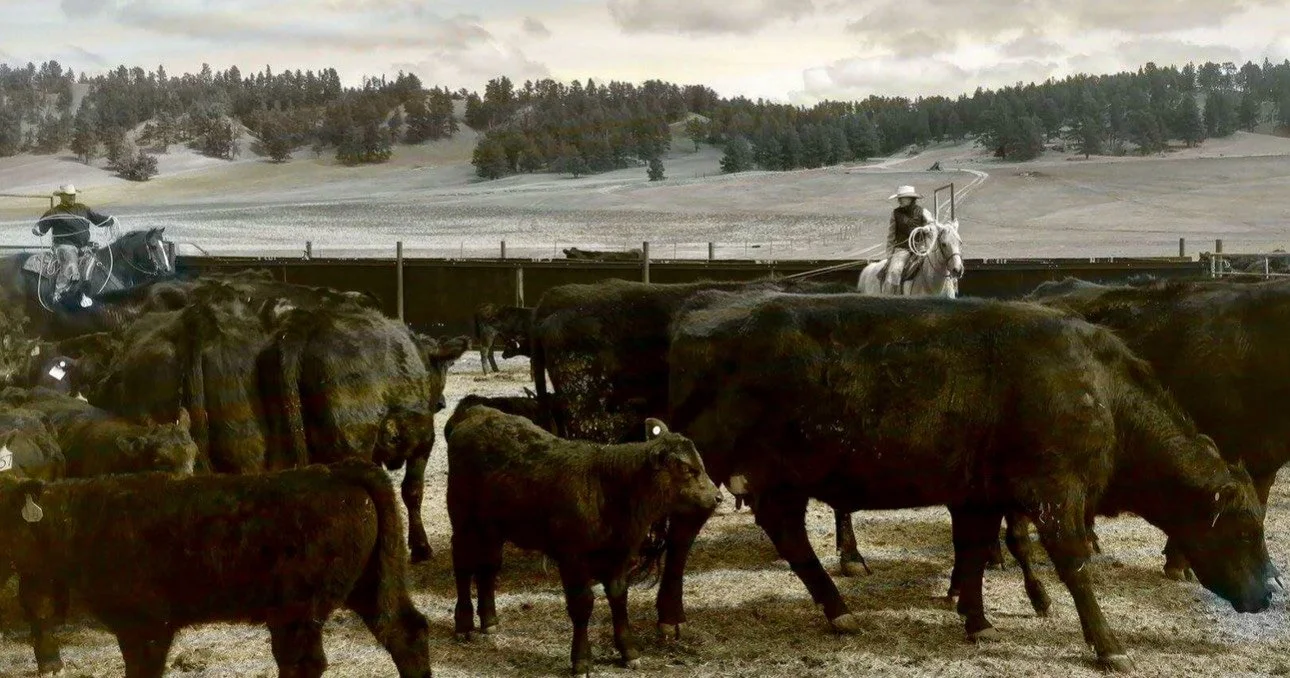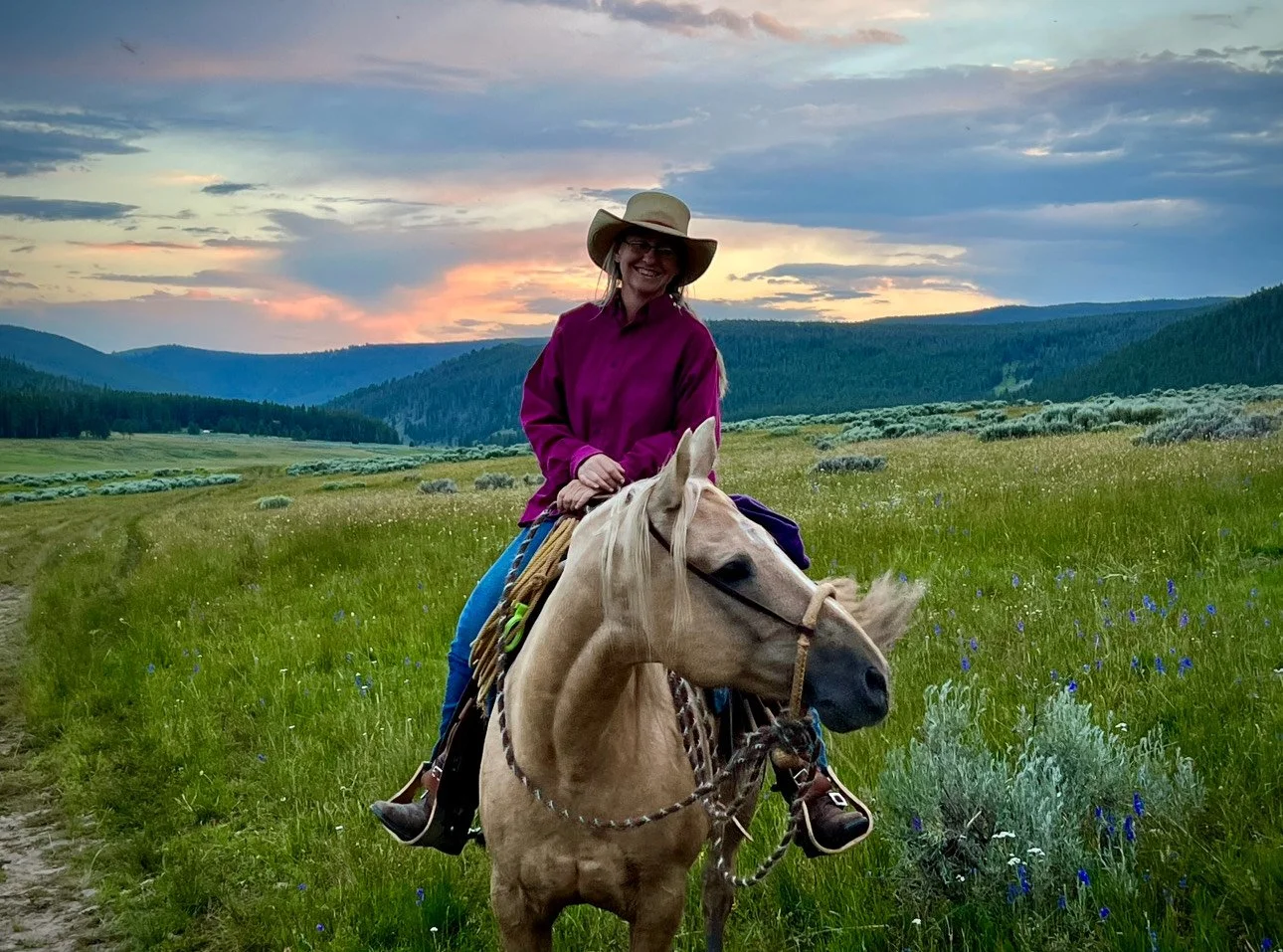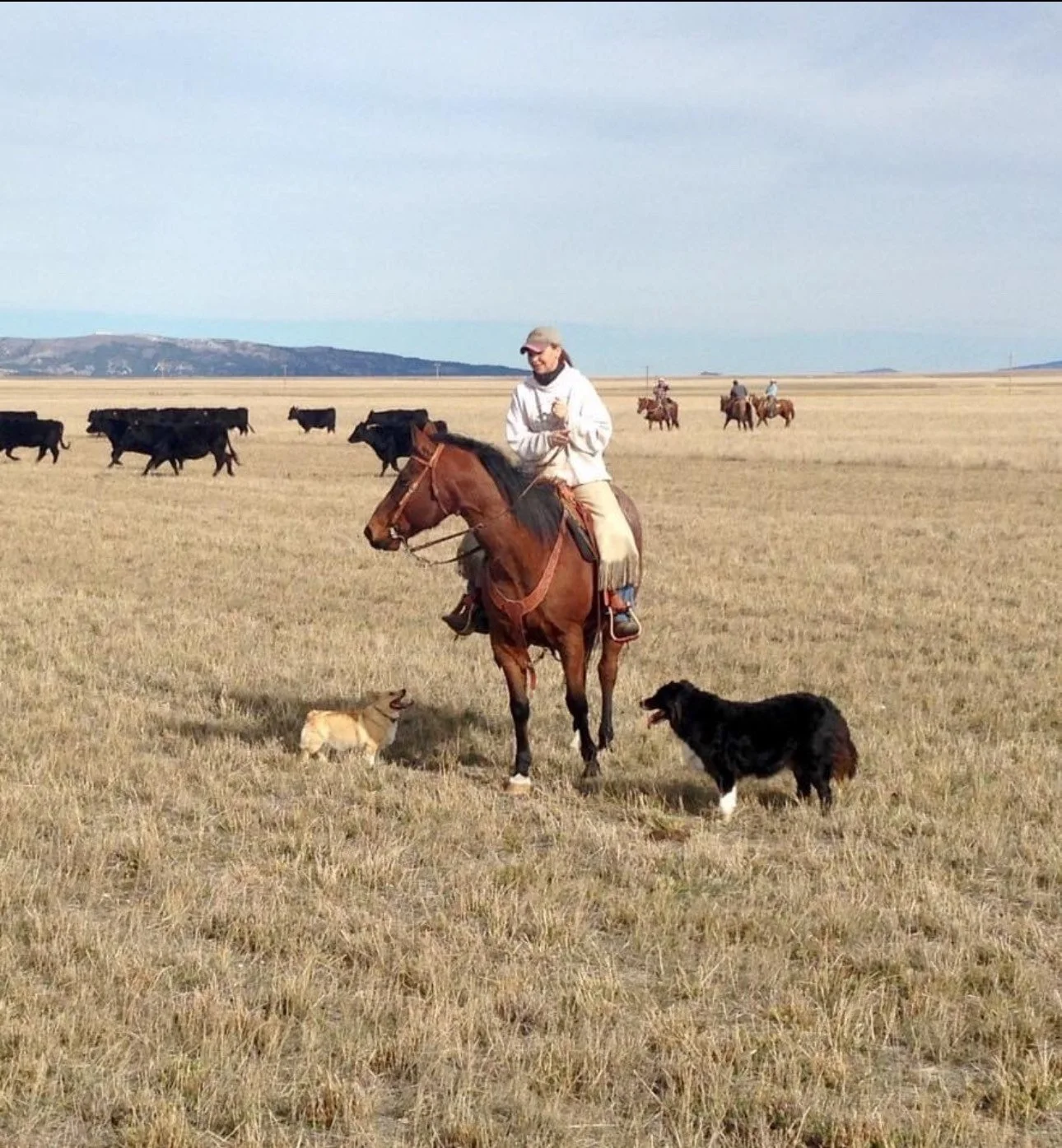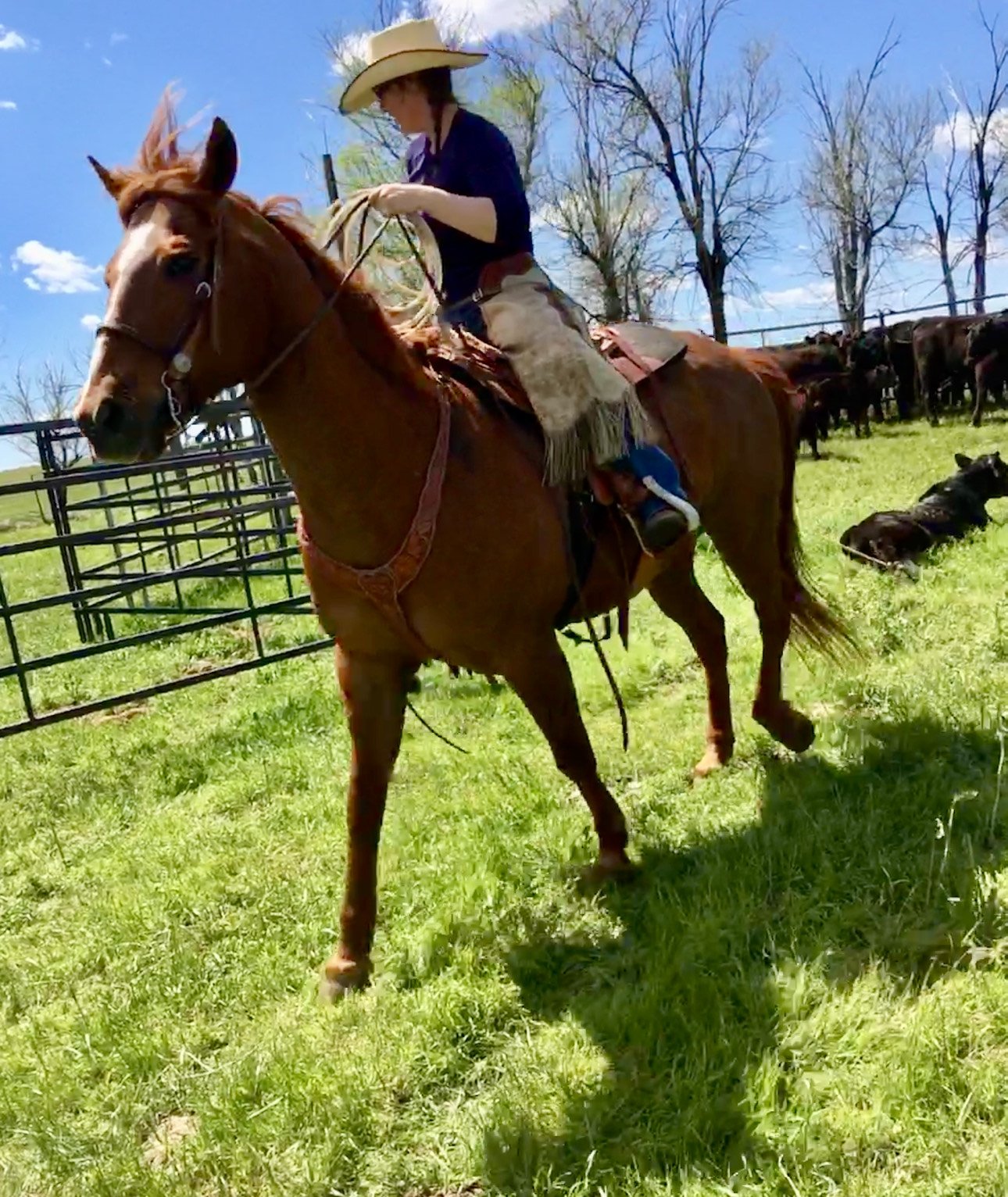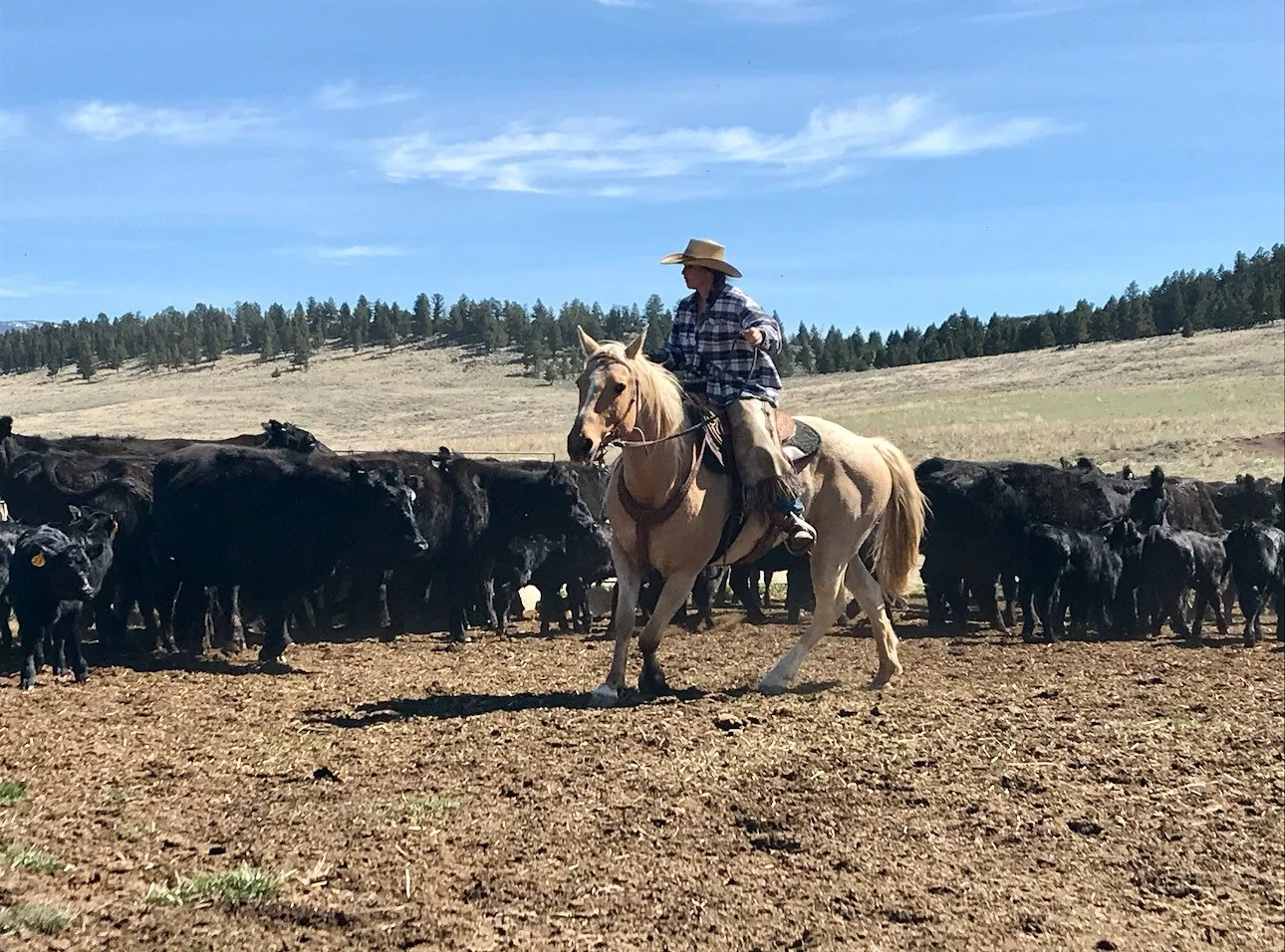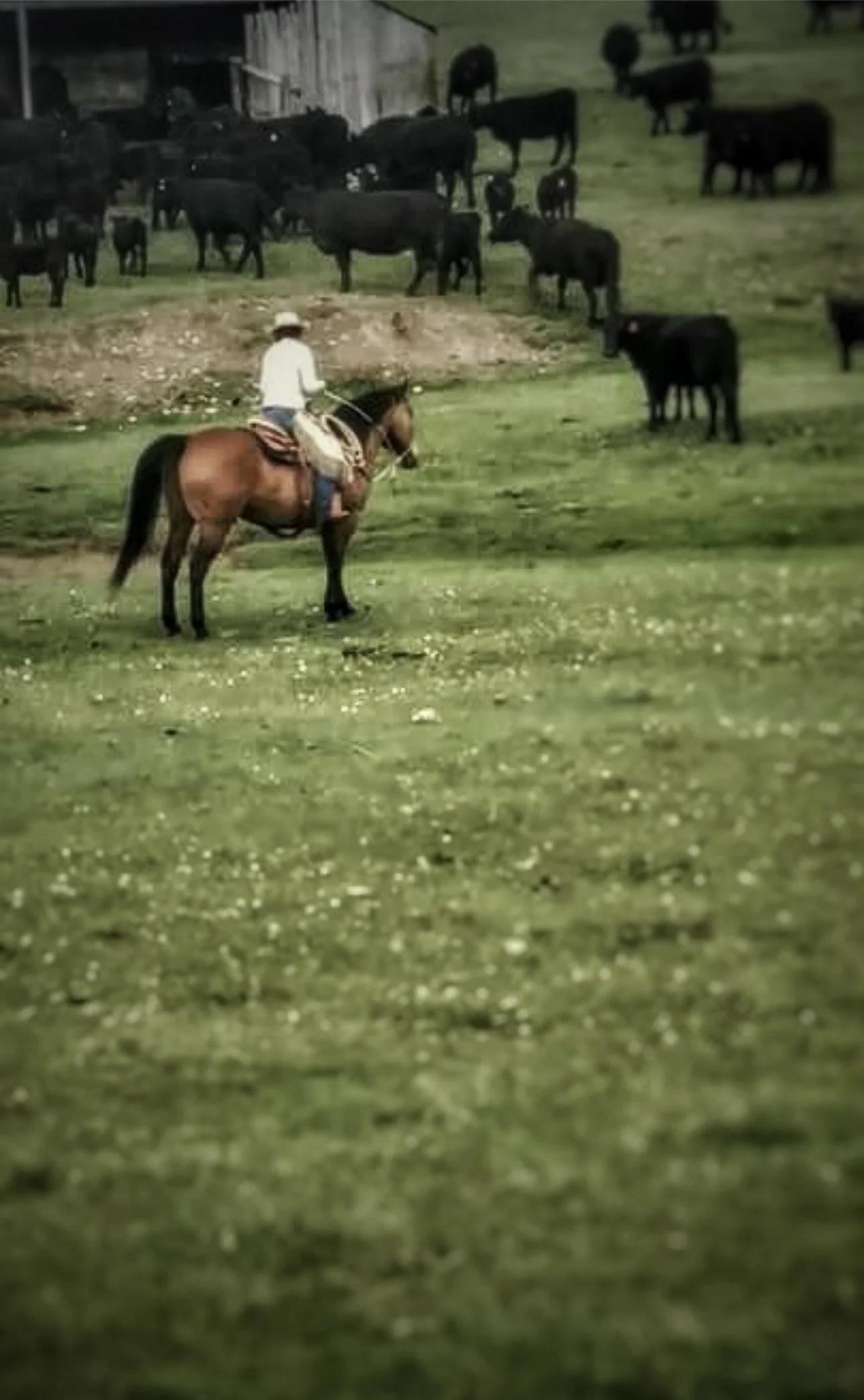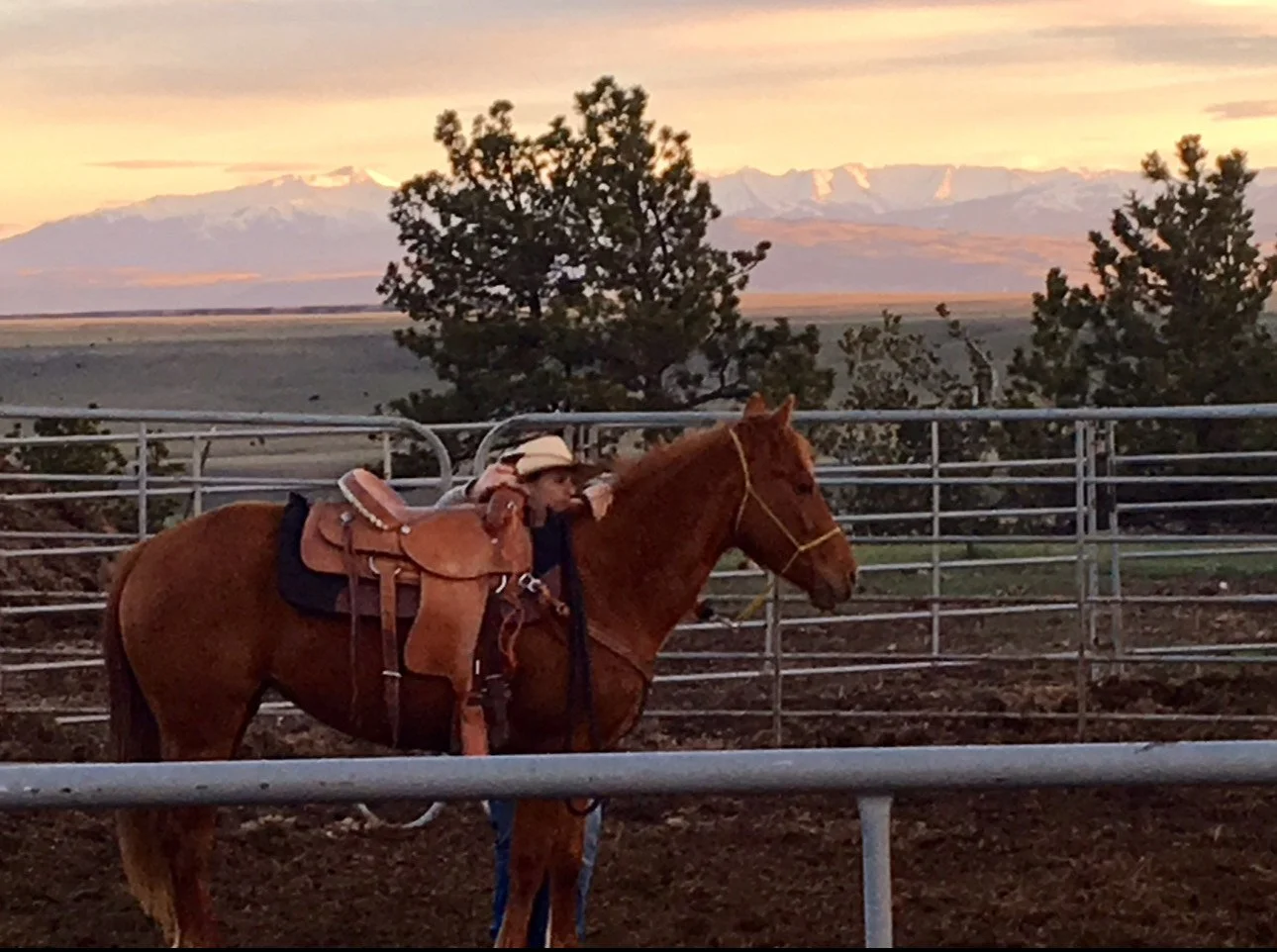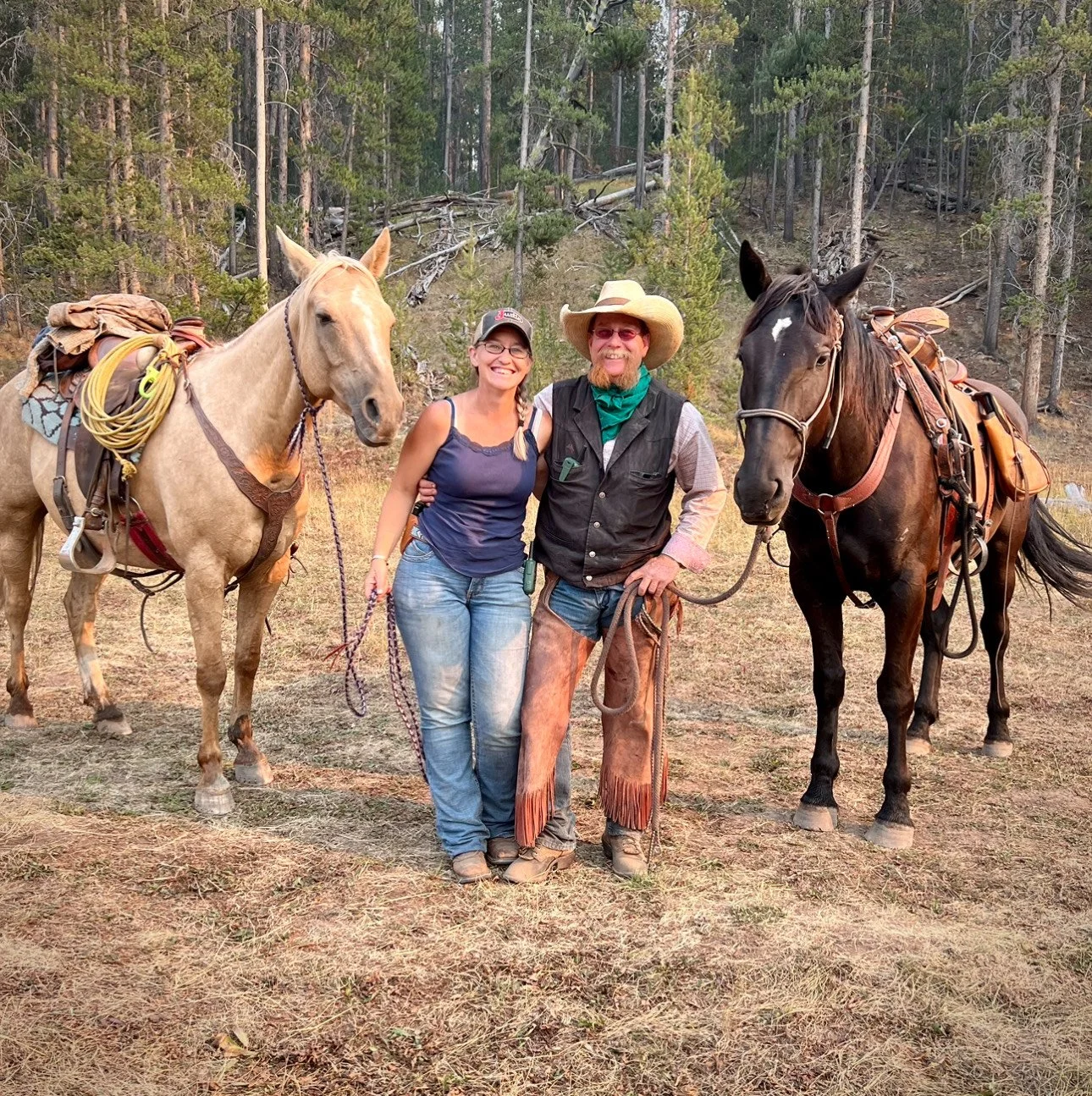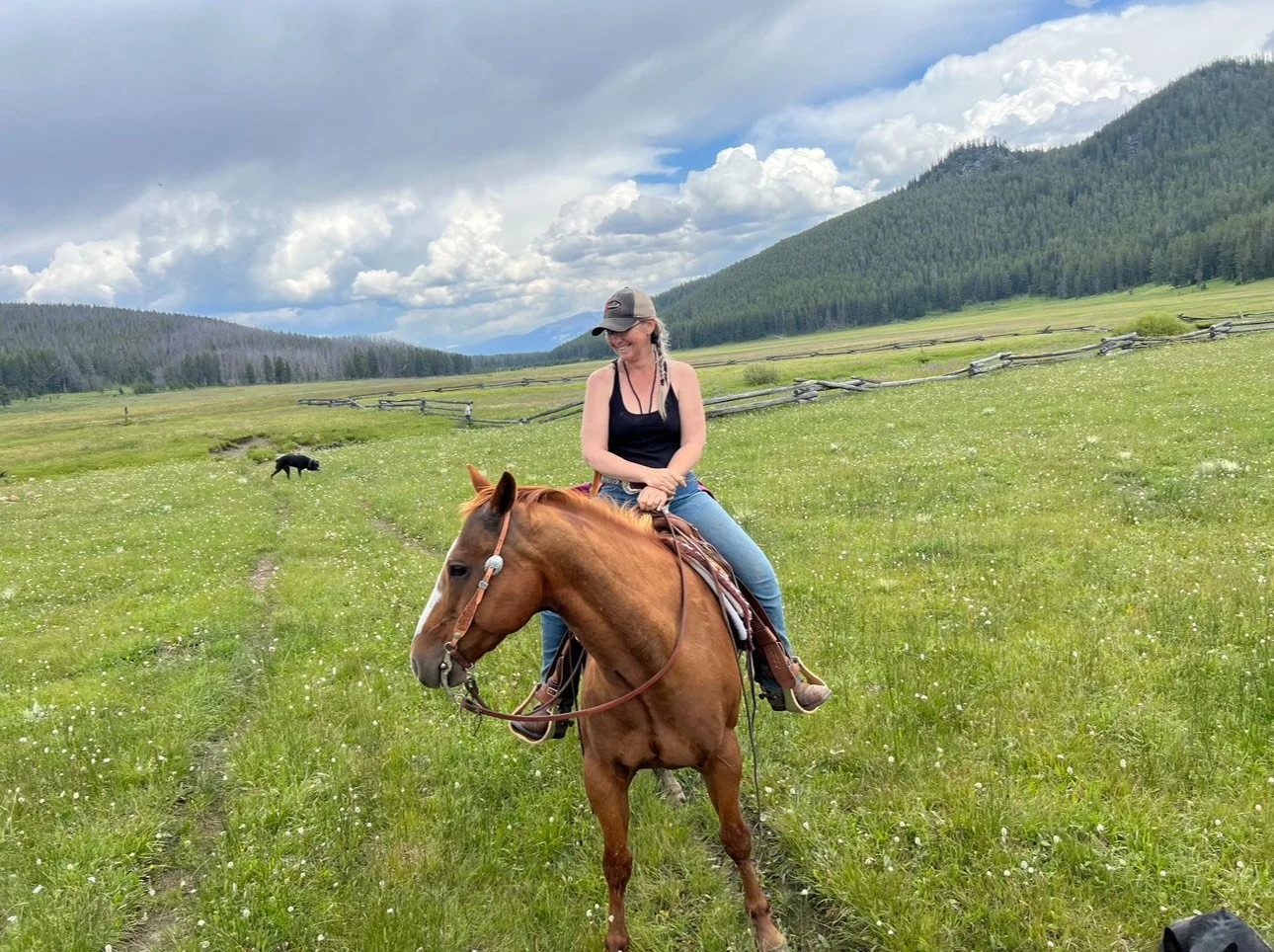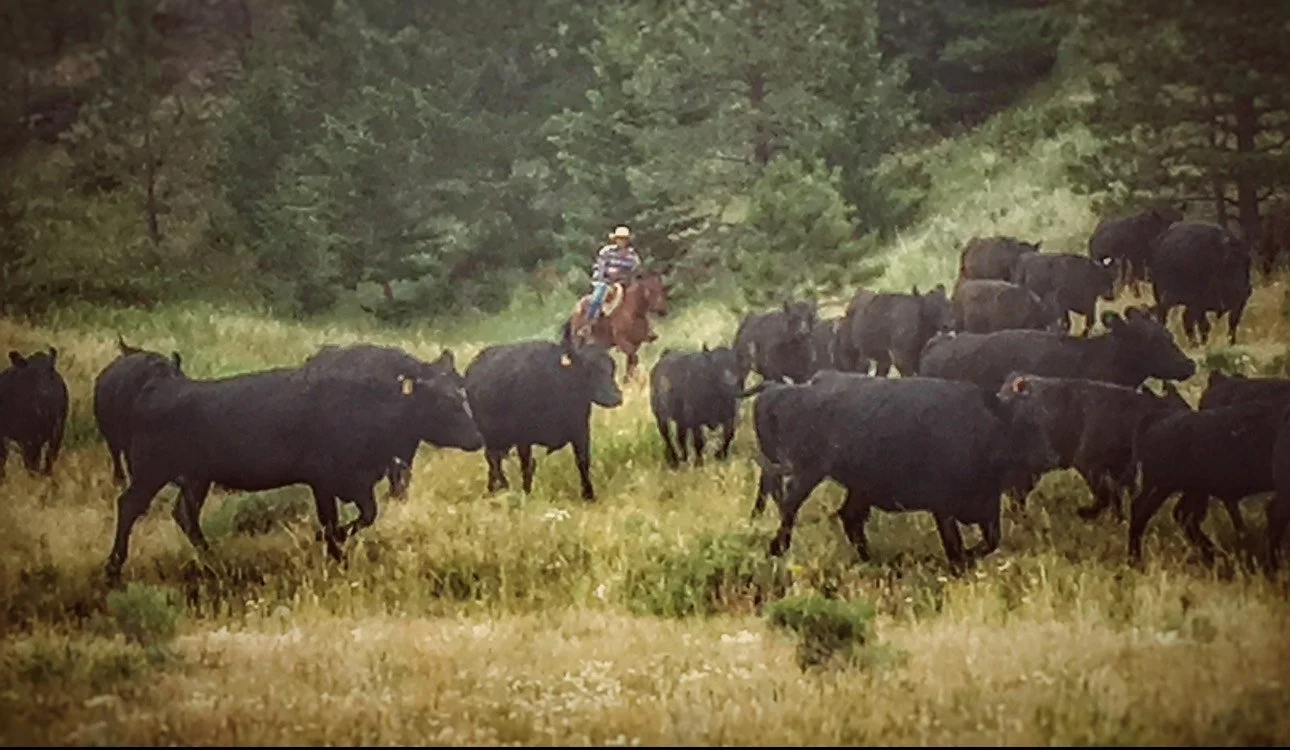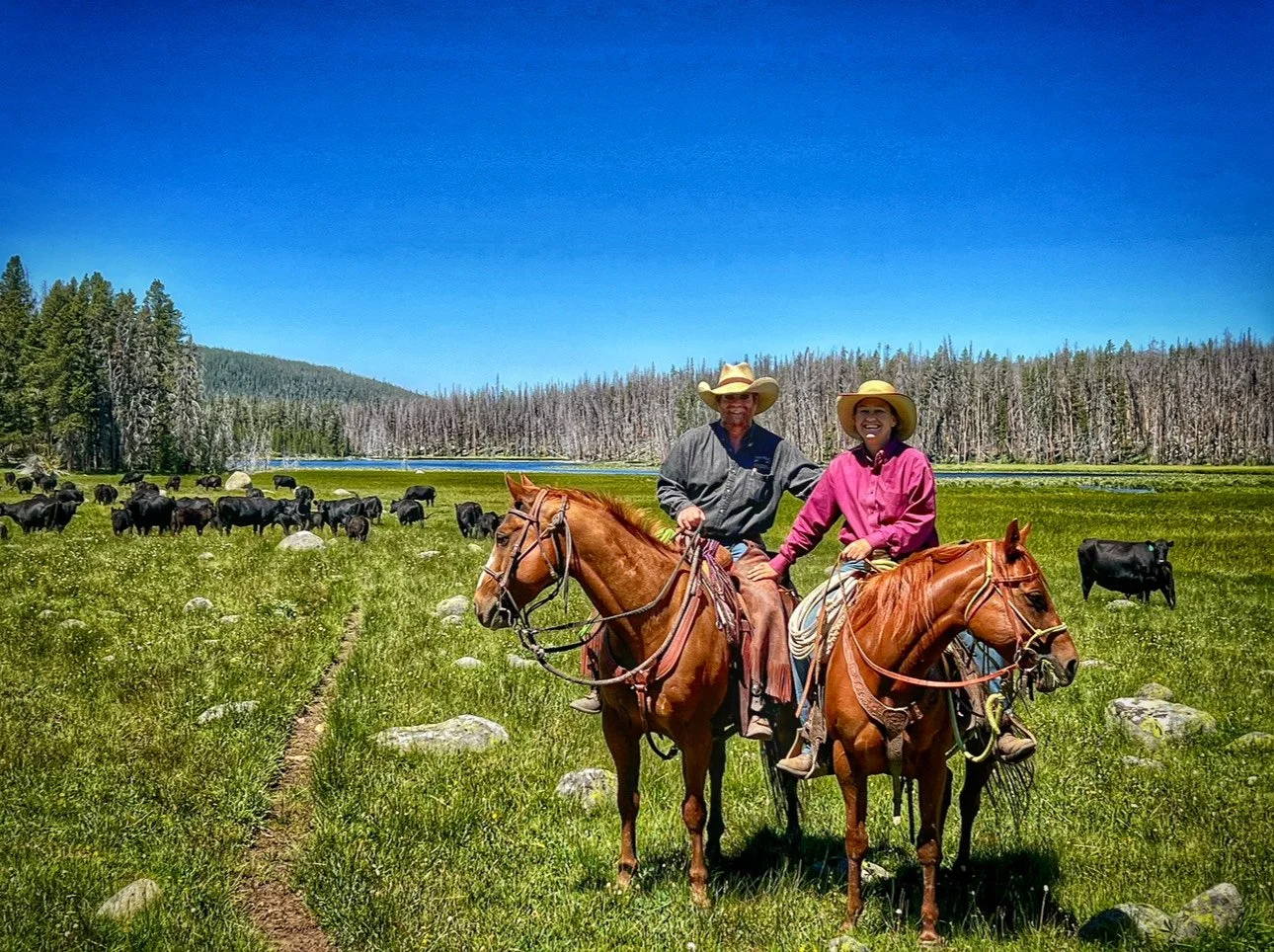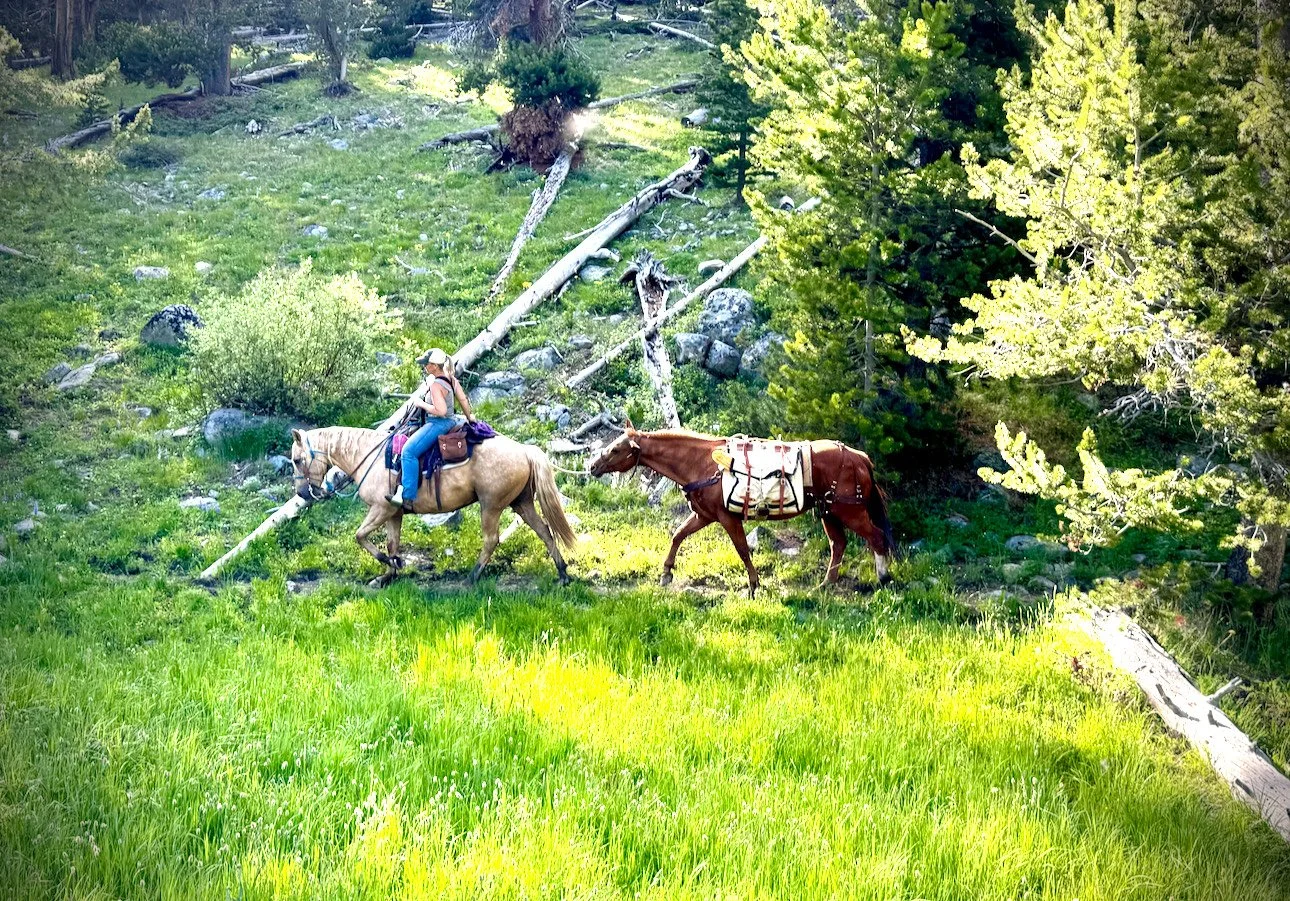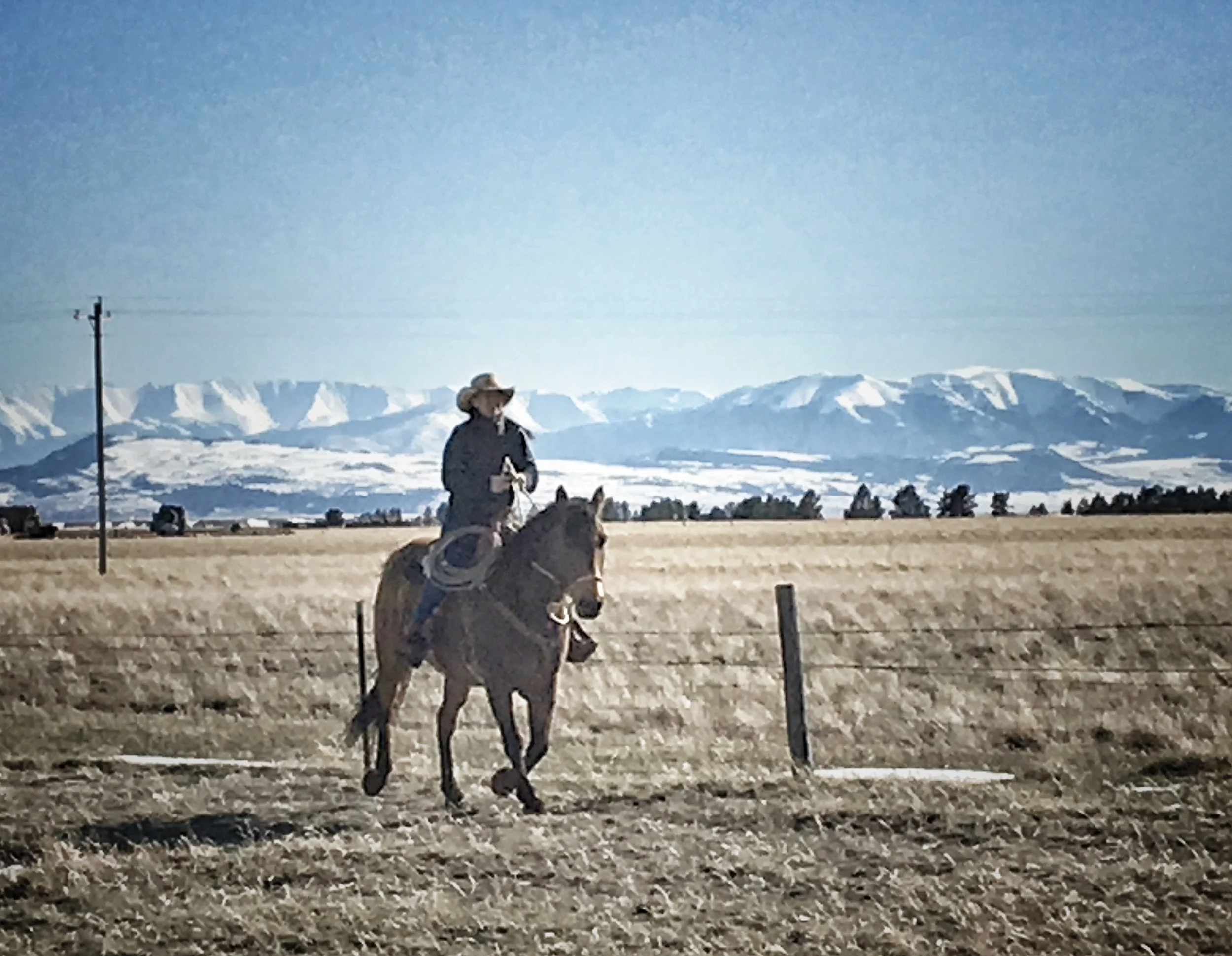Meet your practitioner
Hi there!
I’m Jamie and I’ve lived in Montana my entire life, save a few short months in Idaho where I worked for a feedlot. It was during the long hours there that I really started thinking about our horse’s bodies and what they go through for us on a daily basis.
That feedlot was not an easy job for the horses, both mine and the company horses who lived there. 12-14 hour days, 7 days a week then 2 off for us. The horses were rotated as much as possible but even 3 days a week on concrete like that is so hard on the body.
They received regular vet & farrier care but none of them received anything else like bodywork, chiropractic, or anything else that might have provided them with some sort of additional pain relief. The company horses had that look about them.. you know the one. Dull eyes, tense faces and standing in a corner not wanting to move any more than they had to. Most of that feedlot was cement or hard packed dirt. If it wasn’t that, it was deep mud. A lot of different guys worked there, with a lot of different riding styles, and a lot of different saddles were being used on these horses.. A recipe for some pretty intense soreness.
I know I was sore. I went into town and got a massage and I felt so much better. I could move again and felt all loosened up. It really got me thinking… massage and bodywork for horses isn’t that common in this “cowboy” culture. It sure helps them, so why can’t it be?
I have a special affinity for ranch horses as that’s how I grew up and that’s pretty much what I rode. An occasional 4-H show or playday somewhere but for the most part I was either behind cows or climbing a mountain somewhere. I was raised on the family place in Elk Park and I later moved to central Montana and lived there for 12 years on a cow/calf operation and we used horses there as well.
The “ranch horse.” Tough, gritty, and no nonsense.. no special attention required.
That is, until he can no longer maintain the compensation patterns that his soreness has caused his body to adopt and he either comes up “lame” or his attitude takes a 180 for the worse. Cold backed, bucking, cinchy, harder and harder to catch, etc.…
I didn’t realize that was what was happening at the time. My go-to horse’s attitude got worse and worse and then he started bucking one day. Sure, it could have been any number of things, but I started him myself and I knew him well. Something wasn’t right.
I was convinced it was the saddle. I read everything I could find and did a really deep dive into saddle fitting and other things that might cause “behavior” issues. He was also build downhill, so that added even more hurtles to jump trying to figure out how to fit him. I’d pitch a fit too if I had something jamming into my shoulders all day. Long story short, I took up leather work and ended up going to saddle making school with the intention of learning how to build saddles that will really fit the horse.
Unfortunately, I didn’t find out until I got there that the school didn’t cover much as far as fitting the saddle to the horse, but that was ok. I ended up really falling in love with leatherwork and have been following that road for 15 years. I still have a shop, have built several saddles, and do custom leatherwork along with dabbling in silversmithing.
I still find myself in that saddle fitting rabbit hole and am dedicated to finding a way to help folks with their saddle fit issues. If you’ve ever looked into western saddle fitting you know how confusing it can be. No two tree makers are alike, the QHB and SQHB aren’t the same measurements for all saddles, the bar angles vary from maker to maker, etc. Its a lot.
Since I’ve started massaging horses and really looking at their bodies I can honestly say that there is almost no horse with time under saddle whose body isn’t affected in some way. Even saddles that fit well will still cause fascial restrictions across the withers and back just from being there.
That’s not to point fingers or cast blame, but rather just another reason why saddle fit education is so important and why massage and bodywork needs to be more common to help address these small issues before they snowball into the trainwrecks we often see. It’s preventable.
I have a feeling it will be a lifelong learning journey for me and I am happy to pursue it if it will help the horses.
After 12 years in central Montana, we sold the cows and I moved back to the family place north of Butte, MT. I ran my own cows for a year and then decided it was time to do something else. I met Eric around this time also and together we took that feedlot job in Idaho for a winter. He has been my biggest supporter in pursuing this work and I am eternally grateful for him.
After a winter in Idaho, we came home and landed a dream job. We work for a wonderful family as ranger riders in the mountains of SW Montana looking after 500 pair every summer. No running water, no electricity, no cell service and it’s not uncommon for us to ride 15-25 miles in a day. Heaven.
My favorite horse Bird was pretty sore after that winter in the feedlot, and sore off and on during the this first summer in the mountains. When we came out that fall I had a chiropractor look at him, but she couldn’t find anything amiss.
She told me it seemed to be soft tissue related. She gave me some exercises and stretches to do with him, and I asked if there was anything else I could possibly do to help him, aside from a vet visit if he didn’t improve. Bird was 12 at the time, and I wanted him to be around for many more years. I didn’t want him to end up being another “ranch horse statistic.” Yeah, I’ve got others to ride but he’s my favorite (Don’t tell the others.)
She mentioned that I might have a massage therapist look at him to see if they could ease some of the tension he had all throughout his body. There it was again. Massage therapy for horses.
If you know me at all, you’ll know I’m the queen of “That’s interesting.. I bet I can learn how to do it,” and thus, my equine massage therapy journey began.
I researched and bought some books (I now have a HUGE library of them) and began working on him. I didn’t know what I was doing but he improved. Mr. Grumpy even “liked” it. His soreness lessened every time I worked on him. He seemed “happy” again. His stride became more fluid and less choppy. He started meeting me at the gate instead of running from me when I went out to catch him. He quit biting at me when I cinched him up (that’s NOT normal behavior.)
I started working on Steve, our sorrel gelding who is so cinchy and grouchy all the time. His attitude improved and he quit biting at me when I was cinching him up also. He was always short-strided in front and his stride got longer. Our buckskin gelding Gru is head shy.. I worked on him too. He also improved.
I was hooked. I could not believe I had the power to provide them with such profound relief using only my two hands.
At this point I had decided I wanted to help as many other horses as I could, along with my own, so I started looking for a quality certification program. I researched several and then chose the School of Applied Integrative Therapy in Wyoming, where I completed my certification studies in Jan of 2025. It was a 500 hour program covering equine anatomy, physiology, kinesiology, biomechanics, and pathology, along with the massage and bodywork studies. It also covered business, bio security, and equine behavior and safety, along with many hands on hours.
I’m now studying for and will be sitting for the NBCAAM exam very soon (see FAQ for NBCAAM info.) I am also pursuing certification in kinesiology taping and saddle fitting. I hope to be offering both services by mid spring. Certification in canine massage therapy is also on the distant horizon. My working dogs (and the corgi) are definitely benefiting from my practice hours.
I believe that horses of any age can benefit from massage and bodywork no matter what their job is, or if they even have one. Young horses, retirees, pasture pets, breeding stock, etc.. It’s made a huge difference in all my horses’ lives and I hope to be able to help many, many more horses in the future.
They give us so much without asking for anything in return. It’s the least that I can do.
